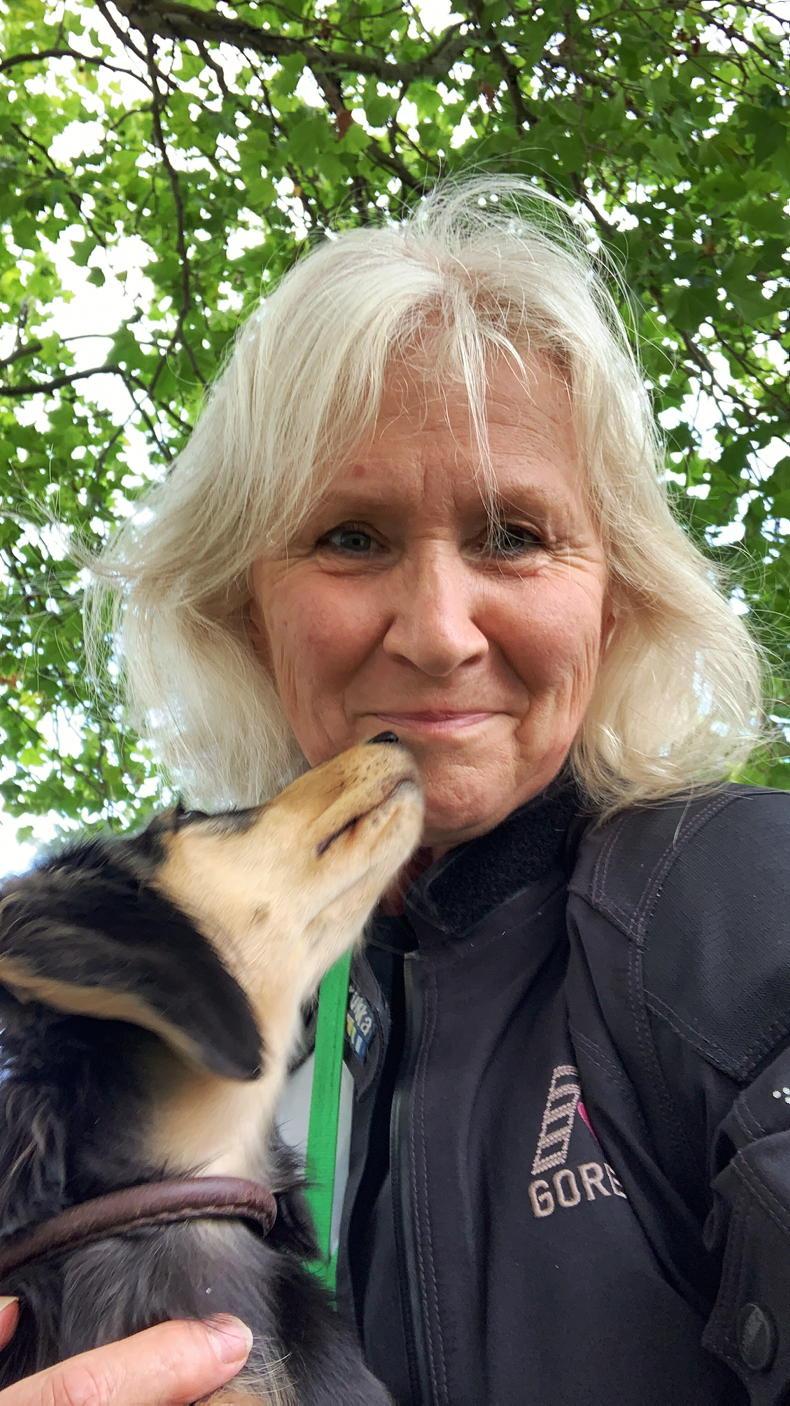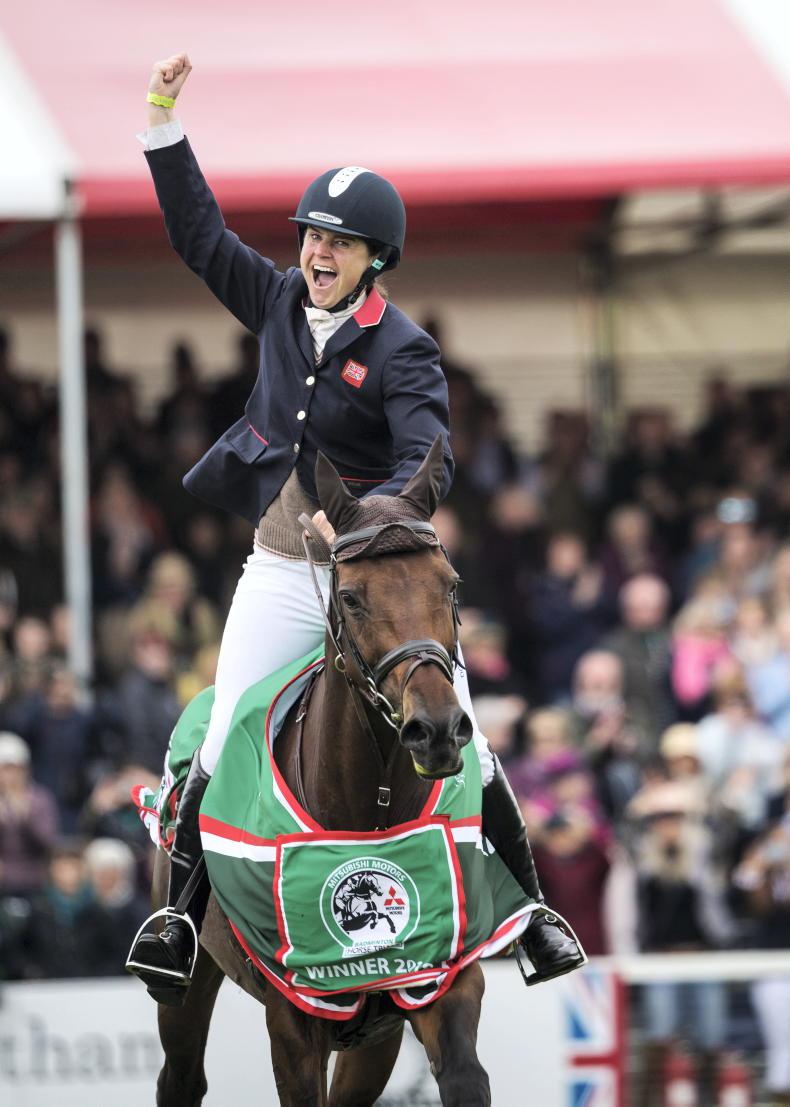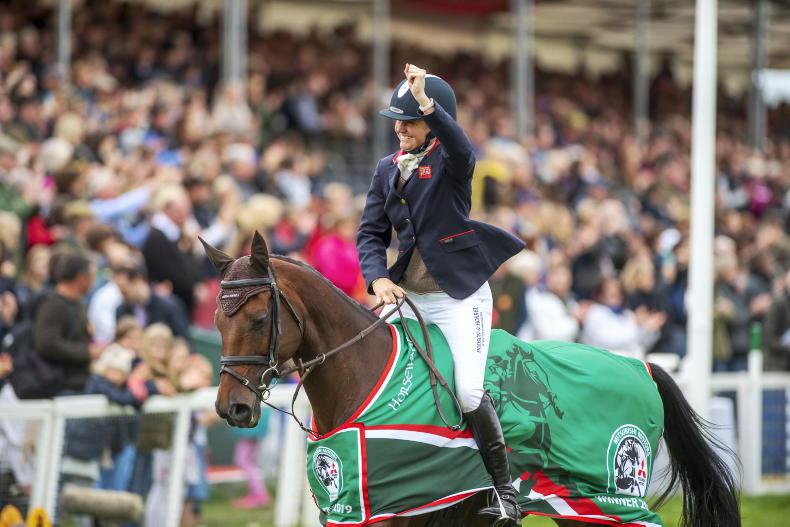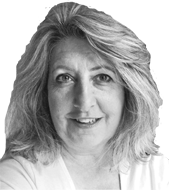IT’s always a surprise when I’m asked to write about horses. Whilst I worked hard to select the best horses I could, I never imagined that I would breed a world-class horse. I regard myself as an accidental breeder of eventers.
I didn’t come from an equestrian background. My sister Hazel [Pitt] and I were both horse-mad and my late niece, Jo Pitt, a member of the Great British para-dressage team, won gold at the 2010 World Equestrian Games in Kentucky, so we must have had a horsey gene lurking in there somewhere.

I moved to Ireland in 1997 with dreams of working full-time with horses, but not terribly well-equipped to manage the strapping Irish youngsters, so it was a rapid learning curve. I’ve never been a particularly talented rider; I was described at my Irish Shows Association-ridden hunter judge assessment as “not very stylish but extremely effective!”
My passion lay in breeding and working with youngsters; giving them the best start I could.
1. Congratulations on breeding Vanir Kamira (Camiro de Haar Z – Dixi), third at Bicton five-star and the fifth-highest ranked Irish Sport Horse in the WBFSH eventing rankings this year. What was your proudest moment as a breeder?
Thank you! That would be Vanir Kamira winning Badminton in 2019. I’m sure all sport horse breeders share the same dream, but it’s the lucky few, whose dreams actually do come to fruition.
2. Tell us about her background.
As a young, single mum, living in Aberdeenshire, I advertised on Horse & Hound for a broodmare “FOC”. Someone called me and asked me what “FOC” meant. I didn’t have the nerve to say “free of charge” so I said “free or cheap” and I bought Fair Words for £200.
She had no recorded breeding but looked to be thoroughbred and she was nicely put together. I covered her with Dixi (TB) and Fair Caledonian was the slightly underwhelming result. She stood about 15.1hh when fully grown.
A Clydesdale horseman I knew said not to worry, “One day that little horse will make you famous.” I took her with me to Ireland and there were one or two scathing remarks about the filly being too small and scrawny to amount to anything but I loved her and apparently, she wasn’t worth selling anyway.
She had several foals for me; she was a great broodmare and an easy foaler. One of those foals was Vanir Kamira.
3. Did you intend to breed event horses?
I intended to breed quality, well-made horses that would be of value to someone. If they were of value, I could be confident that they would be properly cared for. I believe that if you produce any kind of animal, you have a responsibility to do your best to ensure they are looked after.
By selecting animals with excellent conformation, movement, soundness and trainability, you have a good starting point. Size, temperament, etc. will always vary, but not everyone wants the same thing. If you have the basics right, there will be a job for that horse and someone who values it.
4. Why did you choose Camiro de Haar Z?
I did a lot of AI work for Ronnie Hollinger and was very familiar with Camiro de Haar Z. His temperament was second to none, and I just loved his conformation. He was a big lad, incredibly scopey and he seemed like the perfect match for Fair Caledonian.

5. Trevor Dickens, Vanir Kamira’s owner, almost turned her down at Goresbridge due to her undocumented thoroughbred background. Do you think TB blood is important in modern eventing?
Ah, now you’re assuming I’m an expert in breeding event horses, and I’m not really! I think speed, agility, tenacity, courage and soundness are important in the modern eventer. Many modern sport horses have those qualities, from decades of selective breeding. But I don’t think it really matters where those qualities come from, although they are most likely to be from the infusion of Thoroughbred or Arab blood.
There is still a place for traditional sport horses and I hope there always will, because there is nothing more wonderful than a traditional Irish Sport horse.
6. You have said previously that ‘conformation is paramount’. Why do you think conformation is so important?
If the conformation isn’t right, inevitably, something is likely to go wrong. Poor conformation not only compromises soundness, it can also make for a less than pleasant ride. You can have the most talented horse in the world but if it doesn’t stay sound, what use it is?
And let’s face it, you’re not going to buy a horse you can’t bear to look at.
7. It takes a team – who was on yours?
Gerard Green was my team. Gerard has his own yard now, Tonagh Sport Horses in Co Monaghan. He joined me at not much more than 12 years old and asked if he could help. He had a natural affinity with horses and quickly became an excellent rider and talented all-round horseman. Gerard was with me for the best part of 10 years and worked so very hard.
Another couple of people are worth a mention are Kenny Burgess, who picked me up off the floor more times than I care to remember as I learnt the ropes with the youngsters, and Mary McShane who taught me what it was to run a yard full of sport horses.
8. Best advice you ever got?
Just get on with it.
9. You’ve retired gracefully from sport horse breeding, saying that you had bred your once-in-a-lifetime horse and “that was enough for me.” What were some more highlights?
I went to see Vanir Kamira and Piggy March (née French) compete at Burghley Horse Trials in 2019 where they came second. I also met Trevor Dickens for the first time. It was a fantastic experience and I confess there were a few tears.
10. Now you no longer have horses, what keeps you occupied?
I work full-time as a project manager. My husband Al and I both ride motorbikes, touring all over the place in our spare time. We have a little Dachshund pup, Urishay Ambrosia by Sidburyhill, or ‘Topsy’ at home.
She’s a black and cream Miniature Longhaired Dachshund and I’ve taught her to ride on my motorbike with me, sitting in a bag on the tank. I have recently started showing her and she’s qualified for Crufts next year!


 This is a subscriber-only article
This is a subscriber-only article
 It looks like you're browsing in private mode
It looks like you're browsing in private mode







SHARING OPTIONS: